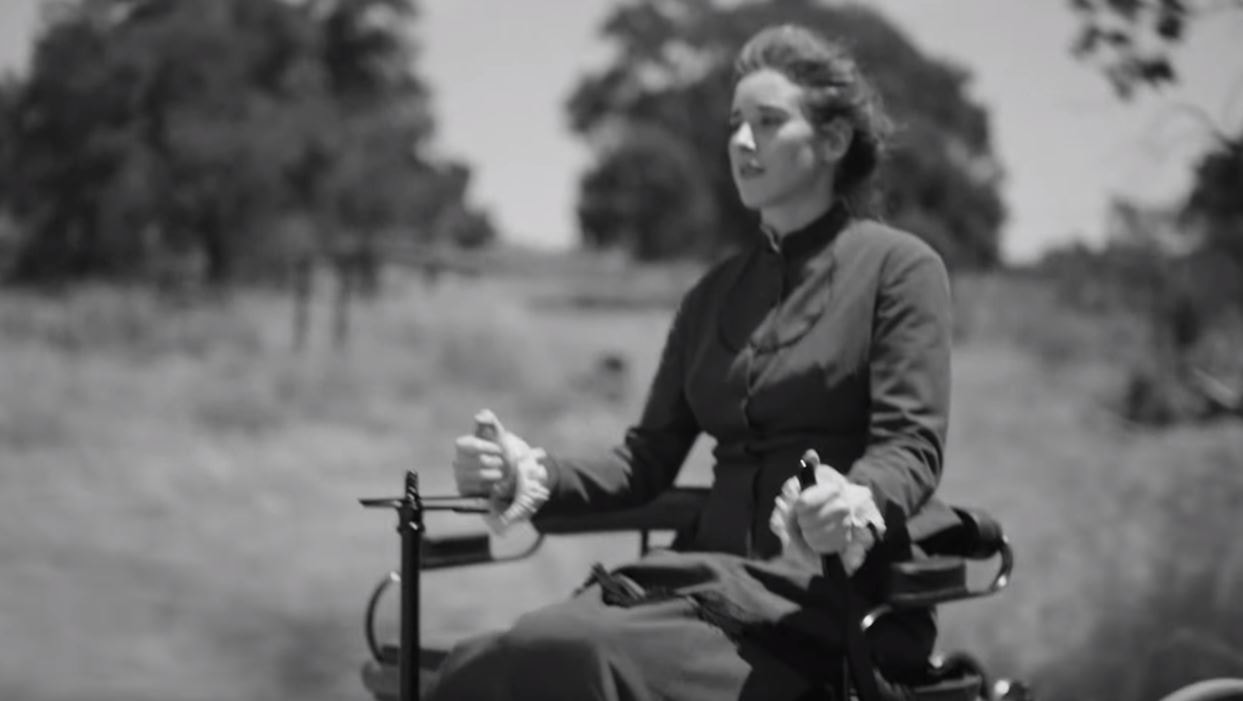It is a common staple of male drivers’ complaints and comedic routines to criticise ‘women drivers’ and their apparent inability to operate an automobile. But were it not for one extraordinary woman driver, entrepreneur, and pioneer in 1888, the chances are none of us would be driving a car at all.
Bertha Ringer was born in 1849 to a wealthy family in Pforzheim in the Grand Duchy of Baden (now in modern-day Germany). In 1870, the twenty-one-year-old used part of her dowry (the money a bride’s family would give to her husband upon marriage) to invest in a failing iron construction company in Mannheim, owned by an obscure inventor named Karl Benz. She had met Karl when the penniless engineer boarded the same coach she and her mother were riding in and started talking about the ‘horseless carriage’ he was working on. Two years later, she married him and became Bertha Benz.

Bertha continued to use her dowry to invest in Karl’s projects, including his company Benz and Cie, established in 1883 to create industrial engines and machines. Her money also helped fund Karl’s inventions and proved vital in the realisation and development of his ‘horseless carriage’ in 1885. The ‘Benz Patent Motorwagen’ consisted of a motor engine mounted on a chasey rested on three wheels, with the back wheels powered by a four-stroke engine; patented in 1886, it would forever be known as the world’s first car. The next two years saw two more updates, the Motorwagen Model 2 in 1887, and the Motorwagen Model III in 1888, which featured two gears and a mind-blowing top speed of ten miles per hour!
There was only one problem, nobody wanted to buy one. The Motorwagen was seen as a novelty, a contraption that could travel a short distance and return to its starting point and only then with the assistance of engineers. This view was not helped by Karl’s appalling marketing of his invention, as something for the rich to ride around in at parties or as a sideshow in travelling fairs. With sales almost non-existent, Karl began to fall into despair and then depression, sure his invention would go nowhere.
But Bertha saw the true potential of the machine she had invested so much money into, a mechanical replacement to the horse and carriage for travelling long distances. Unable to persuade her husband of this, she decided to show him instead. On the morning of 5 August 1888, Bertha set off with her two sons, Richard and Eugen, to visit her mother in Pforzheim, 66 miles (106 kilometres) from Benz’s home in Mannheim.
A journey of this length would usually take a day and a half on horseback. Without the permission of her husband or the authorities, Bertha stole Karl’s ‘driver’s license’, basically a piece of paper signed by an officer of the ducal district office of Baden allowing Karl to drive his machine on public roads, and the Model III. In fact, Bertha and the boys pushed the car to the end of the drive so as not to wake Karl when they started it.

Of course, Bertha could not just stick the car in drive and cruise on to Pforzheim, many complications and problems stood in her way. Firstly, she was driving on wagon tracks created for horses and carts, with no tarmacked surface, so it would have been an exceptionally uncomfortable drive. Also, there was no such thing as a ‘road map’ back then, Bertha had to, and did, navigate using only her memory and signs to make her way through the Baden countryside.
But Bertha’s biggest problem was fuel. The Model III had no fuel tank and only a four-litre supply of petrol in the carburettor, meaning multiple fuel stops were required. But, of course, fuel and gas stations didn’t exist, so, not for the only time on this trip, Bertha had to improvise. She needed ligroin, a petroleum solvent used in many household products and as a cleaning agent, and so stocked at most pharmacists. So, naturally, Bertha stopped at towns and purchased any ligroin or petroleum-based goods she could from the local pharmacy to fuel the engine. The first of these fuel stops took place in Wiesloch, where the old pharmacy building still advertises itself as ‘The World’s First Fuel Station’.
Fuel was not the only example of Bertha’s incredible improvisation on the journey. When a fuel line became blocked, Bertha used her hatpin to unblock it. When an exposed wire short-circuited, she wrapped her garter around it as an insulator. Near the town of Bauschlott, the Model III’s wooden breaks began to fail, so Bertha had the town’s cobbler line the breaks with strips of leather for greater friction. She and the boys also made sure to stock up on water from town wells and roadside ditches to cool the evaporative cooling engine and the three often had to get out and push the car up hills because its two gears were unable to climb them.
Overcoming all this, just after dusk, Bertha sent Karl a telegram from Pforzheim saying she had safely arrived at her mother’s house. For anything that was not a horse or train to travel 66 miles (106 kilometres) in just twelve hours was incredible and previously believed impossible. Whilst an unprecedented success, the journey had also been an important field test (a concept Bertha had championed for years) for the Model III, and Bertha communicated all the problems she had experienced to Karl.

Fuel line design was altered to ease the flow and prevent further blockages and exposed wires were insulated to stop short-circuiting; a lower, third gear was created so the car could scale hills, and the all-important leather break pads were adopted to improve stopping. As such, it was Bertha who invented the vehicle staples of break pads, lower gears, and wire insulation, and under modern law, she would hold the patent rights to all these innovations, but as a married woman in the 1880s, she was not allowed to be named on a patent, only her husband, and so all the credit went to Karl.
But, most importantly, Bertha had shown her husband and the world that the automobile was capable of travelling long distances and was the future of travel. Karl was reinvigorated and ploughed everything into making the Model III perfect for an exhibition in Munich a few weeks later.
Bertha had also helped in this respect too. The sight of a woman and her two sons trundling through the German countryside in a curious wheeled machine was enthralling to onlookers, many townsfolk flocked to see the car on Bertha’s many fuel stops; newspapers across Germany, and later the world, reported the event, as did word of mouth, creating greater publicity for the Motorwagen than Karl could have imagined. Indeed, it is regarded as the first example of ‘live marketing’ in history. And it worked; crowds and pedestrians flocked to Munich weeks later to see Karl Benz’s ‘automobile’ that had covered 66 miles in one day, and orders for the Model III came flooding in from across Europe and the world, launching the great Benz automobile empire and marking a turning point in human travel.
Bertha remained at Karl’s side throughout his life, watching the Benz and Son Company grow from strength to strength and the creation of the first Mercedes-Benz in 1926, always assisting Karl and their sons with altercations, innovations, and, of course, field tests, without any public applause appreciation. But Karl never forgot how pivotal his wife was on that August day and after, writing in his 1925 memoir: “Only one person remained with me in that small ship of life when it seemed destined to sink. That was my wife. Bravely and resolutely she set the new sails of hope”.
Where it not for that wife, mother, entrepreneur, and pioneer taking her husband’s car on that August morning in 1888, the planet-altering phenomenon of car travel would likely never have been realised and the modern world would be very different. Bertha Benz should therefore be regarded as one of, if not the, most important and influential women in history. So the next time you hear someone complain about ‘women drivers’, just remind them that were it not for that original woman driver they would not be behind a wheel at all.












